
Breathtaking new Toronto waterfront district will be an architectural wonderland
A clearer vision is emerging for the futuristic Quayside project planned to transform a stretch of Toronto's waterfront, one that is shaping up to be one of the most architecturally-distinct pockets of development in the entire country.
Revived from the ashes of the ill-fated Sidewalk Labs smart city plan that parent company Google axed in 2020, the new plan for Quayside will bring a mixed-use community with a collection of stunning architectural landmarks to the lakefront site owned in part by Waterfront Toronto (10.4 acres) and the City of Toronto (1.5 acres), as well as PortsToronto and private landowners.
The project took a huge step forward in December 2022, when Waterfront Toronto's Board of Directors approved an agreement with confirmed development partners Great Gulf and Dream, and work has been moving behind the scenes in the weeks since.
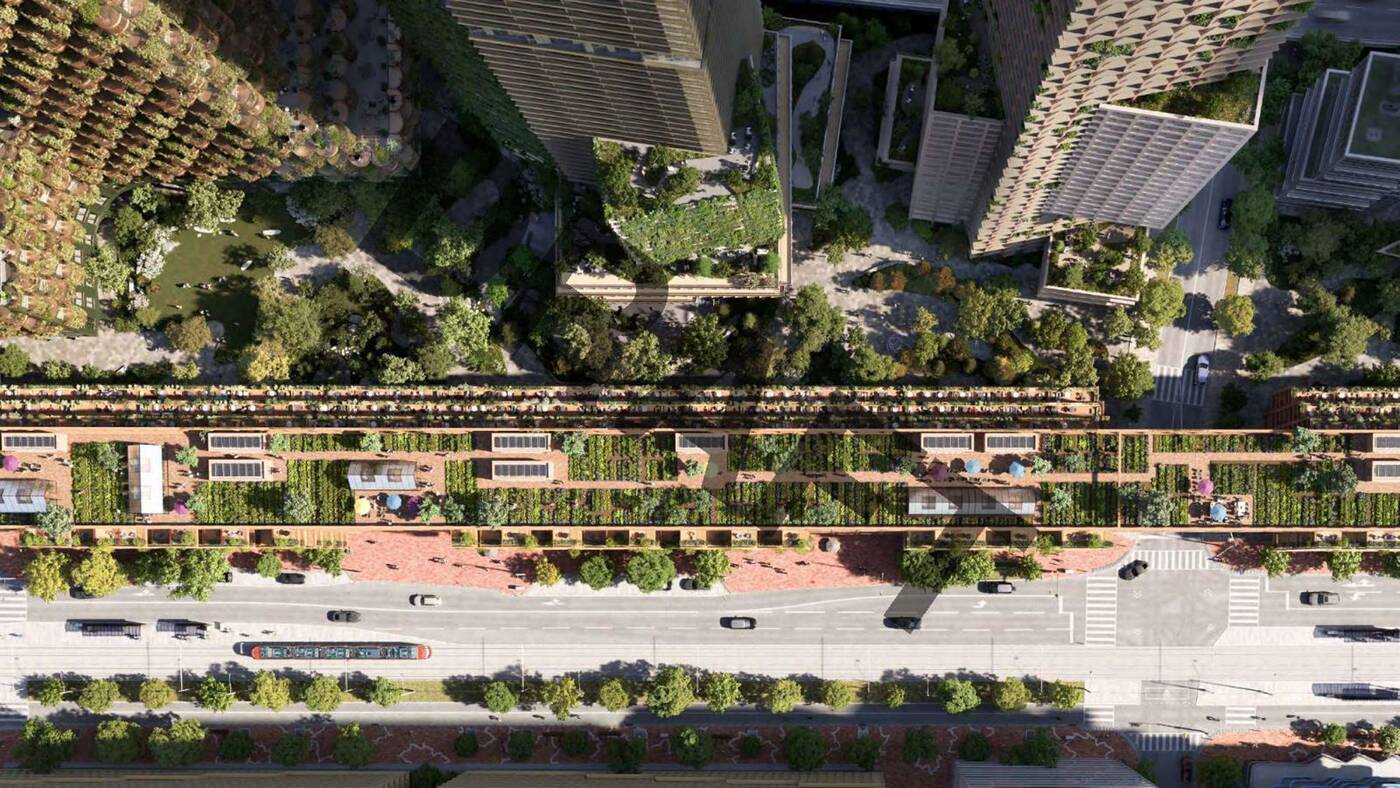 The development will include buildings designed by a team of world-renowned architects, including U.K.-based firms Adjaye Associates and Alison Brooks, and Danish architects Henning Larsen. The individual contributions of these firms are better understood following a recent Waterfront Toronto presentation.
The development will include buildings designed by a team of world-renowned architects, including U.K.-based firms Adjaye Associates and Alison Brooks, and Danish architects Henning Larsen. The individual contributions of these firms are better understood following a recent Waterfront Toronto presentation.
A master plan update for the Quayside site, presented to the Waterfront Design Review Panel on January 25, highlights new details about the community's coming landmarks, and the mix of cultural, residential, and commercial uses that will fill out what is now a barren tract of land at the foot of Parliament Street.

Among the focus points of this update is an absolute stunner of a building designed by Adjaye Associates, known as the Timber House.
Renderings of the Timber House were first revealed roughly a year ago, and the design for this commercial building has continued to evolve in time since.
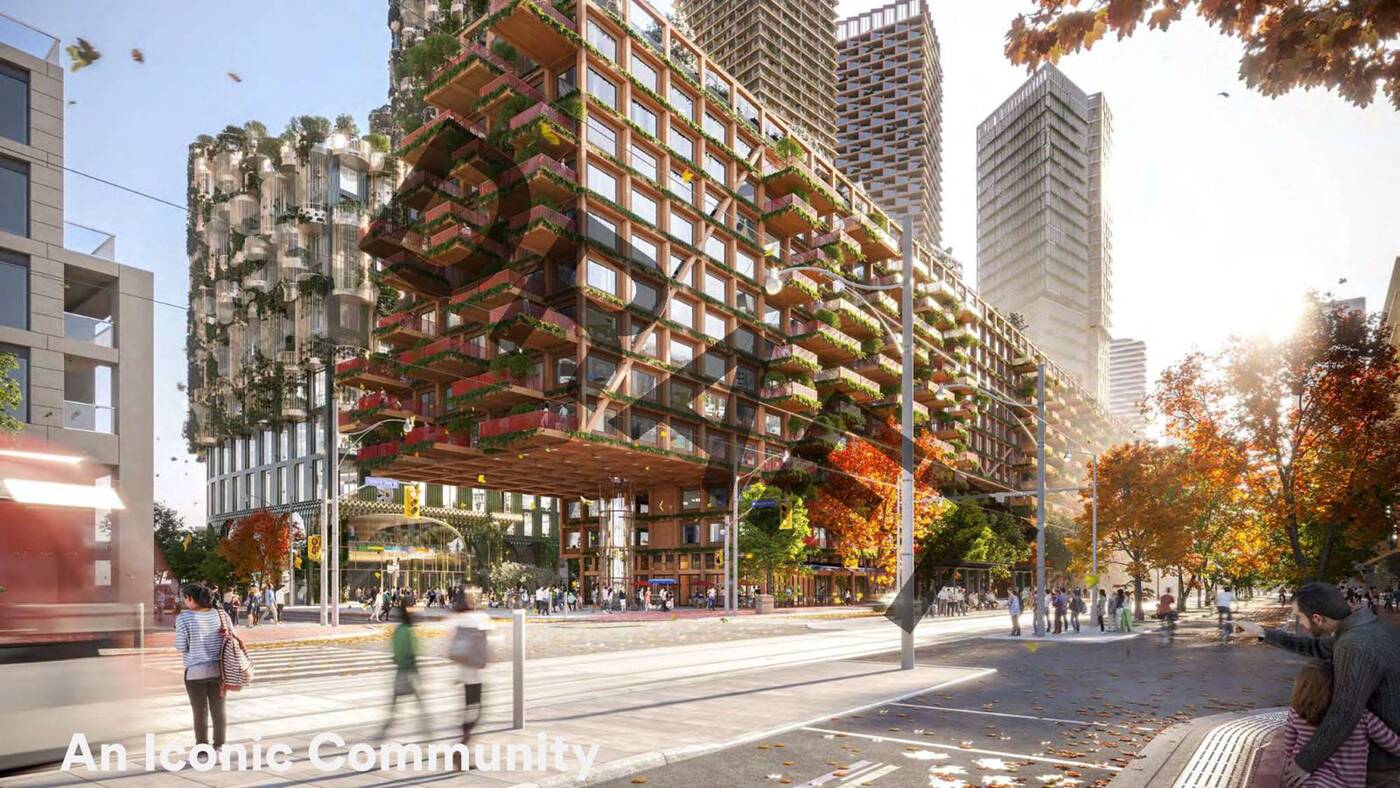
A timber frame inspires the name of the building, which would act as a vast picture frame through large-scaled openings at the ground floor providing framed windows of the waterfront and a public space dubbed the Community Forest.

Features like the openings plug into the Timber House's vision of promoting what planners describe as a "multiplicity of activity, interaction and engagement" with a design that is "flexible and dynamic to inherently encourage sociability and inclusion."
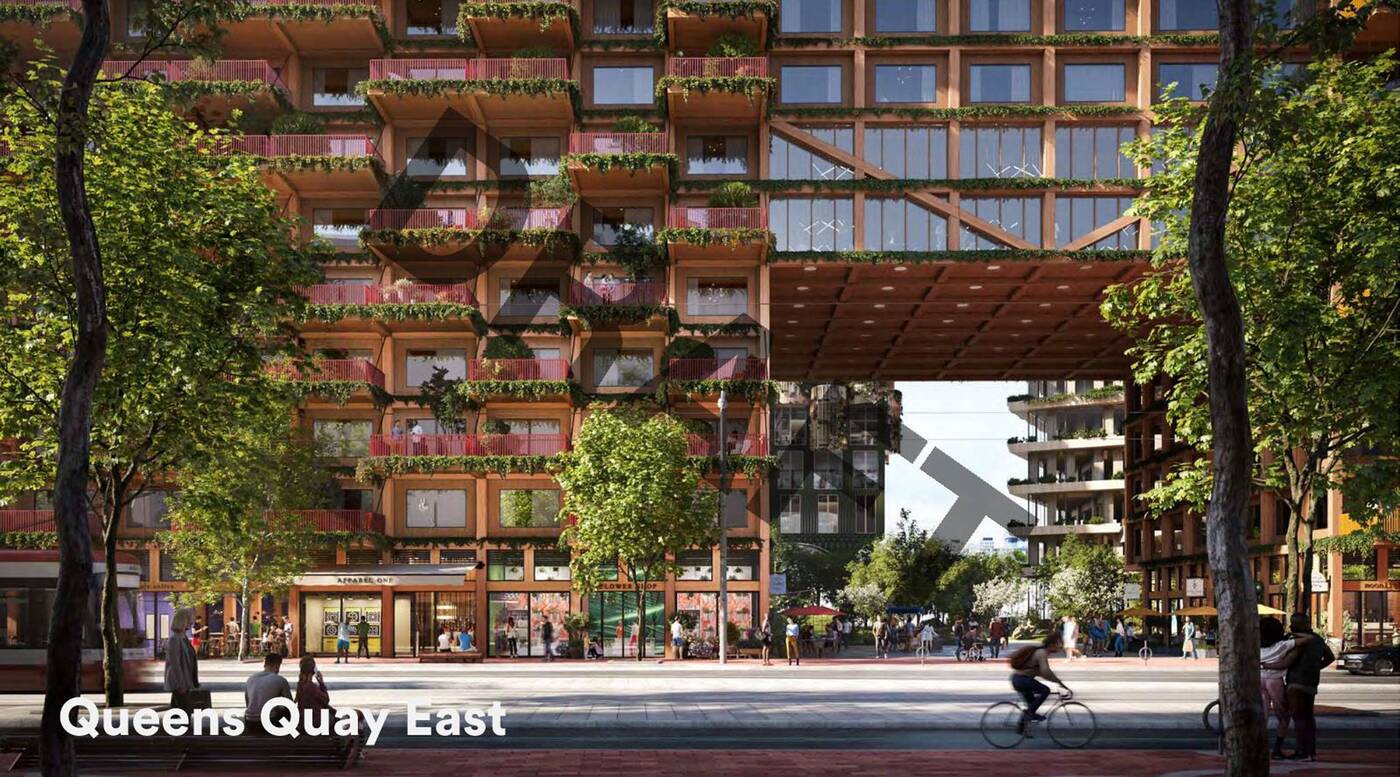
As other buildings in the new district will be expressed through their verticality, the Timber House's design stresses horizontality along the waterfront, without impeding access to the harbour courtesy of the multiple carved mid-block connections.
The Timber House building would be topped by an urban farm which the project team states is "about production and the stewardship of an entire ecology where people, plants, insects, and birds can all flourish."
Plans suggest that this space will be publicly accessible, sure to make it a favourite spot for skyline watchers and photographers.
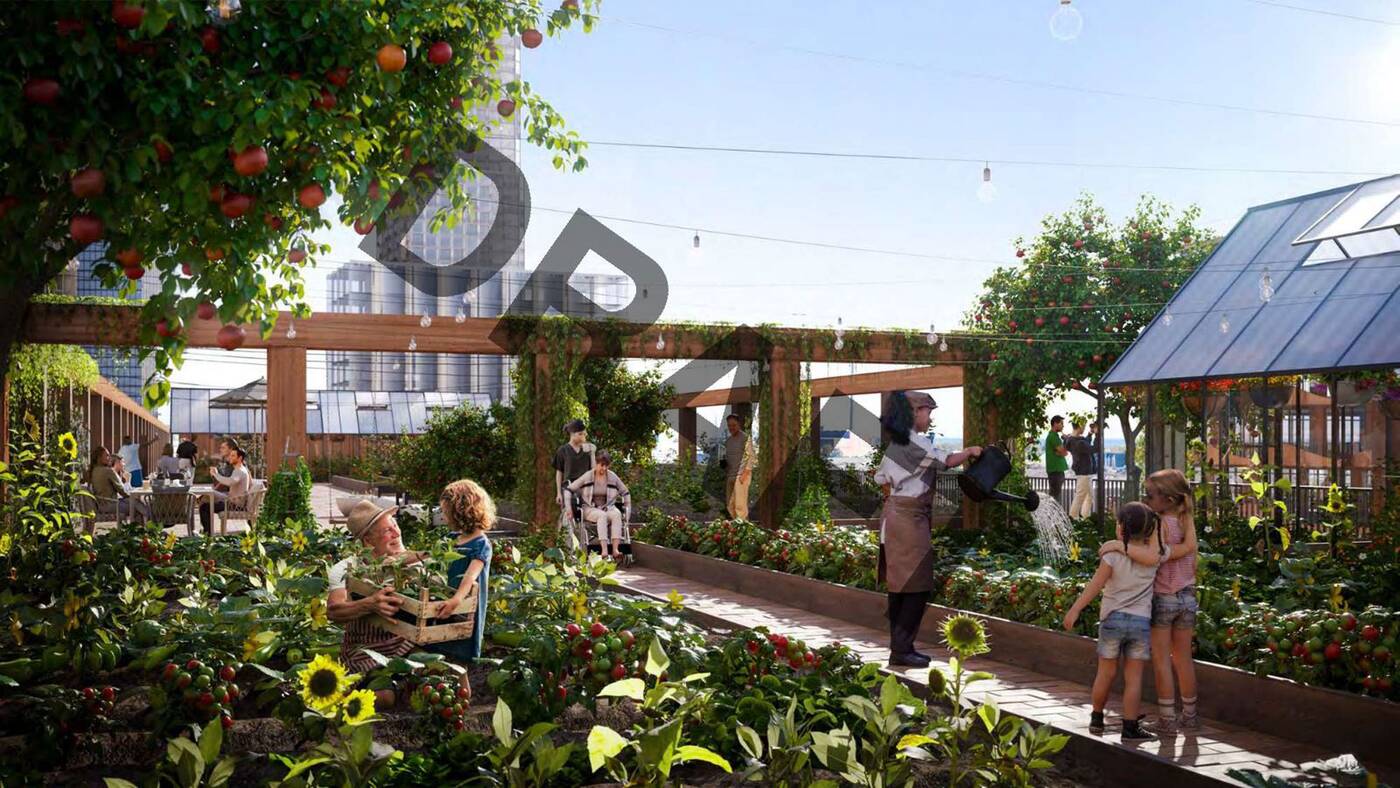
The building is also described as an opportunity for reconciliation by honouring Indigenous communities and acknowledging climate and sustainability challenges facing urban development, reflected in its biophilic design and natural-themed placemaking.
The Timber House is just one component in the broader masterplan, with blocks broken out into different uses, including a neighbourhood cluster with community and retail blocks, and a destination cluster offering wellness, food, and cultural draws.
Another building highlighted in this plan is known as The Western Curve, a residential building with a striking greenery-draped design by Alison Brooks Architects.
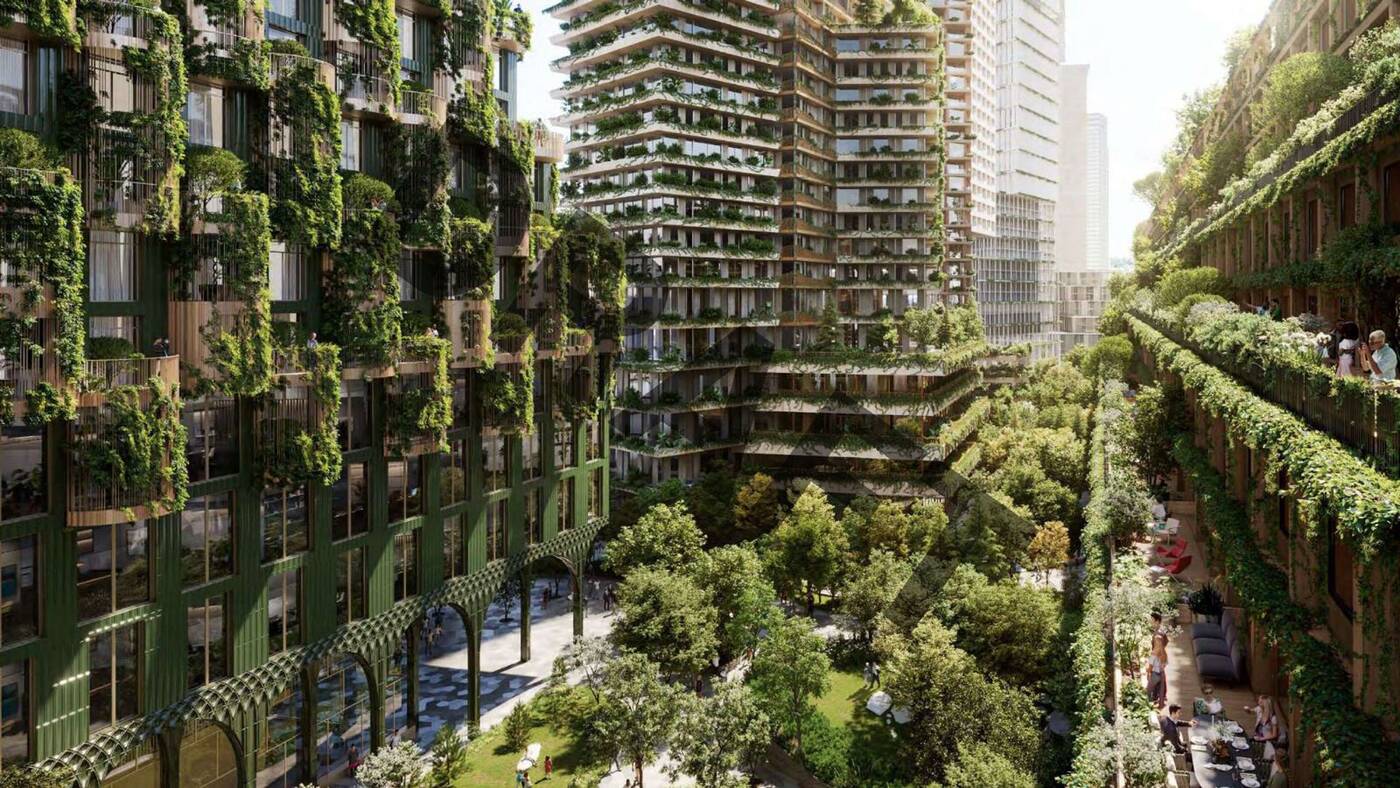 Updated renderings of The Western Curve add to those already shared the year before, most notably focusing on a ground-floor colonnade that will frame the aforementioned Community Forest.
Updated renderings of The Western Curve add to those already shared the year before, most notably focusing on a ground-floor colonnade that will frame the aforementioned Community Forest.
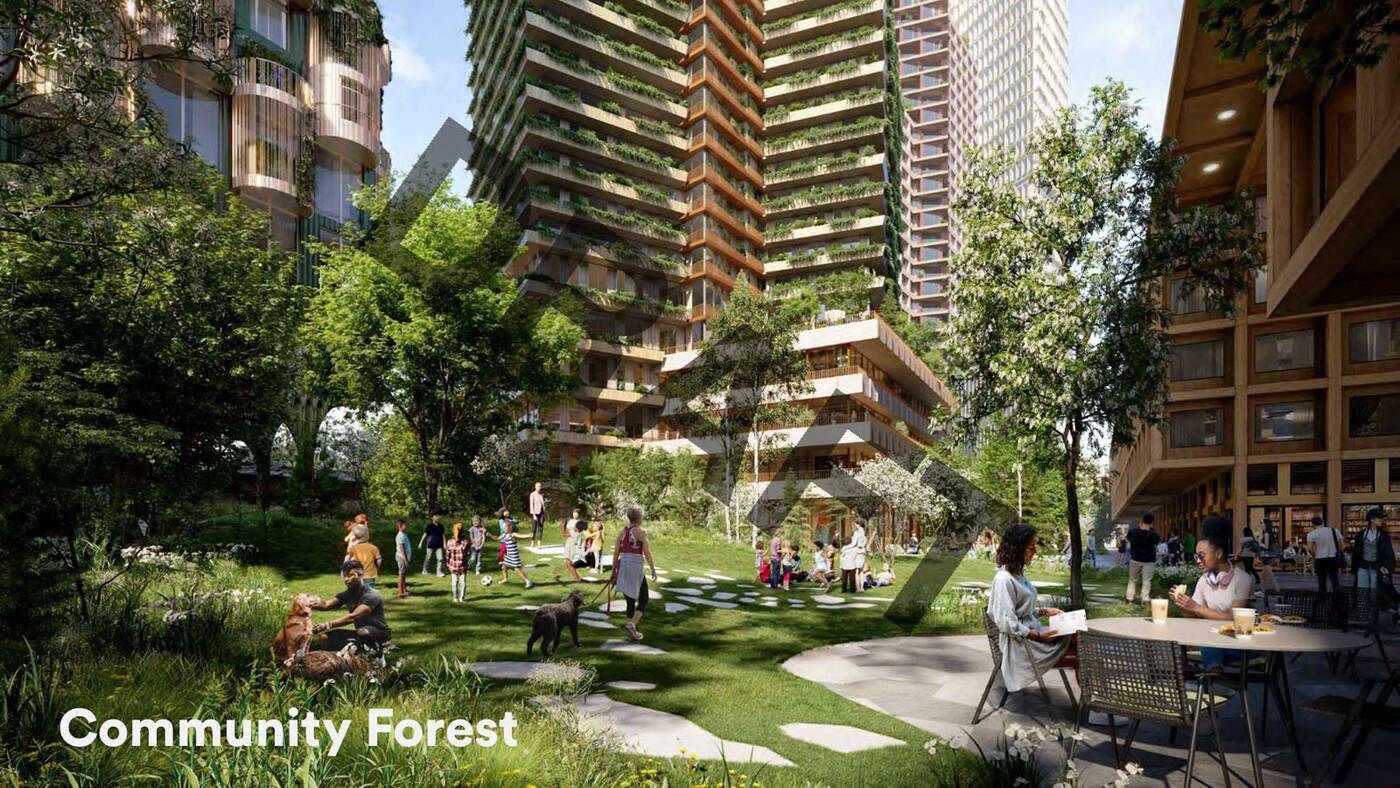 Renderings of a planned cultural and recreation area at Quayside depict a cylindrical-shaped venue, new WaveDecks, a floating market, and other destination spaces that promise a new draw for the waterfront, though the centrepiece building appears to just be a placeholder for a forthcoming design.
Renderings of a planned cultural and recreation area at Quayside depict a cylindrical-shaped venue, new WaveDecks, a floating market, and other destination spaces that promise a new draw for the waterfront, though the centrepiece building appears to just be a placeholder for a forthcoming design.

Other key components in the new community include over 800 new affordable housing units that will be spread throughout the community along with market-rate housing.
One of the most notable goals is the low-carbon, sustainable development plan that aims to achieve near-zero greenhouse gas emissions, which, if realized as proposed, would become the first all-electric, zero-carbon community constructed at this scale.
Waterfront Toronto
Latest Videos
Latest Videos
Join the conversation Load comments







